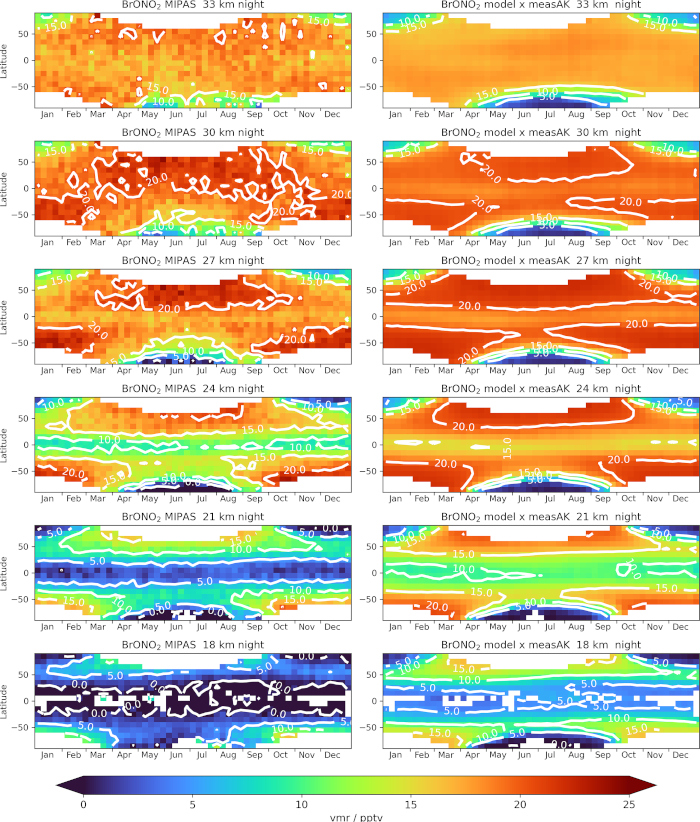10 years of global distributions of BrONO2 from MIPAS measurements

The panels on the left show the seasonal variation of nighttime BrONO2 as derived from the latest data version (v8) of 10 years of MIPAS spectra for 10 deg latitude bands, weekly bins, and altitude levels between 18 and 33 km; the panels on the right present the same from a multi-annual simulation with the chemical climate model ECHAM/MESSy Atmospheric Chemistry (EMAC) after application of the MIPAS averaging kernels. The complete global coverage of the MIPAS data allows for the first time to fully assess our understanding of the chemistry of BrONO2 in the stratosphere.
All leading modes of spatial and temporal variability of stratospheric BrONO2 in the observations are well represented by the model simulations: the large diurnal variability (not shown here), the low values during polar winter as well as the maximum values at mid and high latitudes during summer. Three major differences between observations and model results are observed: (1) a model underestimation of enhanced BrONO2 in the polar winter stratosphere above about 30 km of up to 15 pptv, (2) up to 8 pptv higher modelled values than observed globally in the lower stratosphere up to 25 km, most obvious during night, and (3) up to 5 pptv lower modelled concentrations at tropical latitudes between 27 and 32 km during sunlit conditions (not shown here). (1) is explained by the model missing enhanced NOx produced in the mesosphere and lower thermosphere subsiding at high latitudes in winter. This is the first time that observational evidence for enhancement of BrONO2 caused by mesospheric NOx production is reported. The other major inconsistencies (2, 3) between EMAC model results and observations hint at a model underestimation of heterogeneous loss of BrONO2 in the lower stratosphere, a too weak simulated production of BrONO2 during the day, and model deficiencies when loss by O(3P) in addition to photolysis is simulated. The total stratospheric bromine content relative to years of stratospheric entry between 1997 and 2007 has been estimated at an average value of 21.2±1.4 pptv of Bry at mid latitudes which is in agreement with estimates of Bry derived from observations of BrO and from MIPAS-Balloon measurements of BrONO2.
Details can be found under https://acp.copernicus.org/articles/21/18433/2021/
